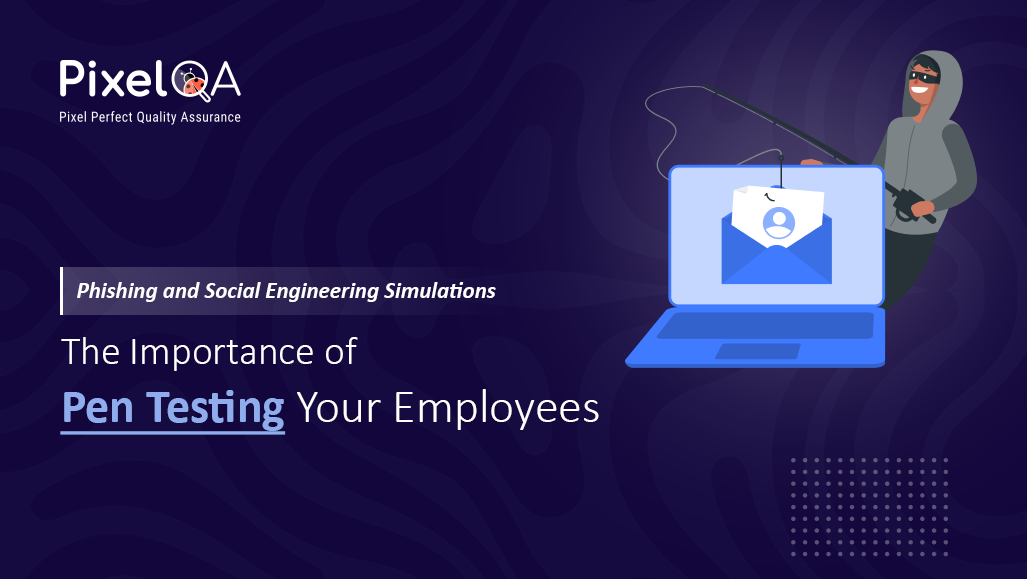
Most people in the cybersecurity field concentrate on firewalls, antivirus programs, and intricate technological instruments. However, what if we told you that people pose a greater security risk than software?
Attacks using social engineering, particularly phishing, target humans rather than machines. And regrettably, they frequently succeed. For this reason, Penetration Testing Services that include social engineering and simulated phishing assaults are equally as crucial as evaluating your networks and systems.
We'll go over what social engineering is, why it poses such a serious risk, and how phishing simulations may help safeguard your company in this article. You'll see why your staff is your first and final line of defense at the end.
Table of Content
- Social the field of engineering what is it?
- Why Is Social Engineering So Dangerous?
- Describe Phishing Simulations
- Why Pentesting Your People is Just as Important
- What Clients Should Know About Social Engineering Pentests
- How to Begin Using Simulations for Phishing
- Conclusion
Social the field of engineering what is it?
The skill of tricking someone into divulging private information or doing activities that jeopardize security is known as social engineering. Social engineering assaults don't require malware or code, in contrast to technical hackers. They rely on psychology, trust, and deceit.
Common Types of Social Engineering Attacks:
1. Phishing – Emails that trick users into clicking malicious links or entering sensitive data.
2. Spear Phishing – Targeted phishing aimed at specific individuals or roles.
3. Vishing – Voice calls pretending to be from tech support, banks, or HR to steal credentials.
4. Smishing – SMS messages that contain malicious links or requests.
5. Pretexting – Creating a fake scenario (e.g., posing as an IT person) to gain trust.
6. Tailgating – Physically following someone into a secure area without authorization.
These attacks work because humans are naturally trusting—and attackers know how to exploit that.
Why Is Social Engineering So Dangerous?
Because it bypasses technical security measures. Your company might have the best antivirus, firewall, and encryption—but if an employee is tricked into handing over their password, none of those matters.
A Few Examples from the Real World:
- Twitter (2020): Hacked by high-profile users such as Barack Obama and Elon Musk, who had hackers gain access to internal tools by way of social engineering.
- Target (2013): 40 million credit card numbers were compromised when hackers gained control of a third-party vendor by way of a phishing email.
- Sony Pictures (2014): The hacking technique that led to mass data breaches and financial losses involved social engineering.
These incidents weren’t caused by weak passwords or unpatched software—they were caused by tricking people.
Describe Phishing Simulations
Your security team or a reliable vendor can run a phishing simulation, which is a false phishing campaign, to see how staff members react. It is safe and regulated, yet it copies actual phishing attempts.
How It Works:
1. Planning: Choose a realistic phishing scenario (e.g., fake HR email, package delivery alert, or fake login page).
2. Execution: Send phishing emails to employees.
3. Monitoring: Track who clicks the link, enters data, or reports the email.
4. Training: Give instant feedback or redirect users to a short learning module.
5. Reporting: Review results and improve future awareness training.
It’s like a fire drill for your inbox—testing how employees react when a real threat appears.
Why Pentesting Your People is Just as Important
Most penetration tests (pentests) focus on testing networks, web applications, and systems. But employees are part of your attack surface too. If your people fall for a phishing email, all the technical security in the world won’t help.
Here’s why social engineering pentests matter:
1. Humans Are the Weakest Link
Even trained employees can make mistakes. A moment of distraction or urgency can lead to clicking on a malicious link.
2. Attackers Start with People
Many advanced attacks begin with phishing. Gaining access to just one account can give attackers a foothold inside your network.
3. Training is Not Enough
Just giving employees, a yearly security training video isn’t enough. Phishing simulations show who is still vulnerable in real scenarios.
4. Measurable Results
Simulations give you real data: How many clicked? How many reported? Where are the weaknesses? This helps focus future training.
What Clients Should Know About Social Engineering Pentests
If you're a business leader or security manager considering this kind of test, here are some things to keep in mind:
✔It’s Not About Shaming Employees
The goal isn’t to catch people doing something wrong—it’s to help them learn. Results should be anonymous or used for coaching, not punishment.
✔Tailor the Test to Your Environment
Use realistic scenarios. If your team regularly uses Microsoft Teams, simulate an alert from Teams. If you have remote employees, try a fake VPN notice.
✔Follow Up with Education
If someone clicks a simulated phishing link, provide short, targeted training right away. Make it helpful, not heavy-handed.
✔Simulate Regularly
Doing it once a year isn’t enough. Regular simulations (quarterly or monthly) build a culture of awareness.
How to Begin Using Simulations for Phishing
To get you started, here is a simple, step-by-step guide:
1. Select a Reputable Vendor or Tool: Phishing simulation features are available in programs like Microsoft Defender, Cofense, and KnowBe4.
2. Get Management Buy-In: Explain the benefits to leadership—it's about risk reduction, not blame.
3. Plan Your Campaign: Decide on the audience, schedule, and message types.
4. Notify Managers (If needed): So, they aren’t caught off guard by reports.
5. Run the Simulation: Launch and monitor quietly.
6. Analyze Results: Who clicked? Who reported? What trends are emerging?
7. Provide Feedback and Training: Help employees understand what they missed.
8. Repeat: Regular testing keeps awareness high.
Conclusion
Cybersecurity is more than simply technology and tools. People are the focus.
Attackers find social engineering attacks, particularly phishing, to be inexpensive, simple, and successful. Simulated attacks are therefore a wise and proactive way to test your personnel.
The purpose of phishing simulations is to safeguard your company and train staff to be better defenders, not to apprehend individuals.
Employees become your strongest line of protection against cyber risks when they are trained to recognize bogus emails, question odd requests, and exercise critical thought.
Therefore, don't wait for an actual attack to observe the response of your squad.
Test now. Train now. Stay secure.
About Author

Rushi Mistry is a Security Analyst at PixelQA a Software Testing Company with a focus on cybersecurity. He is passionate about IoT penetration testing and is working towards obtaining a CISSP certification, with the ultimate goal of becoming a Chief Information Security Officer (CISO).

_638835908979067060.png)